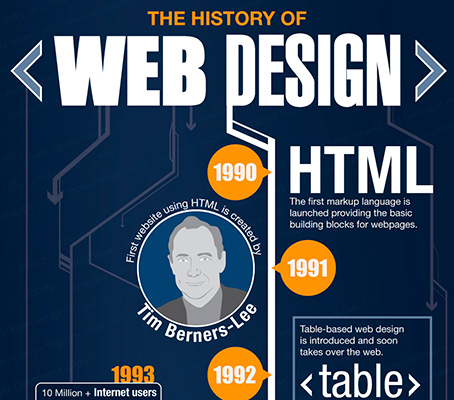Site Style: A Trip Via Time.From Simple Starts To Modern-Day Wonders, Web Site Style Has Actually Gone Through A Considerable Transformation Throughout The Years
Site Style: A Trip Via Time.From Simple Starts To Modern-Day Wonders, Web Site Style Has Actually Gone Through A Considerable Transformation Throughout The Years
Blog Article
Short Article Written By-Carstens Singer
In the past, websites were easy and focused on details. Navigation was straight, and style was for desktop computers. Now, individual experience is key. Information overviews designs for easy navigation. Receptive formats fit different gadgets. Today, dark mode reduces strain, and minimal food selections improve navigation. Interactive functions engage customers, and strong visuals attract attention. AI integration increases interaction. See how style has actually developed to enhance your on the internet journey.
Very Early Days of Web Design
In the early days of website design, simpleness reigned supreme. Web sites were standard, with minimal colors, fonts, and formats. The focus was on providing information as opposed to fancy visuals. Users accessed the web via slow dial-up links, so speed and functionality were crucial.
Navigation menus were straightforward, usually located on top or side of the web page. Sites were developed for home computer, as mobile surfing had not been yet widespread. Web content was king, and developers prioritized simple readability over intricate design aspects.
HTML was the key coding language utilized, and designers had to work within its restraints. Animations and interactive attributes were marginal compared to today's criteria. Websites were static, with little vibrant content or tailored user experiences.
Increase of User-Focused Layout
With the development of internet site style, a change towards user-focused style principles has ended up being significantly noticeable. Today, producing sites that focus on individual experience is crucial for involving site visitors and attaining business objectives. User-focused style involves recognizing the demands, preferences, and actions of your target audience to tailor the website's format, material, and features accordingly.
https://email-marketing-automatio94948.is-blog.com/36197896/crafting-engaging-marketing-text-for-your-pay-per-click-campaigns conduct extensive research, such as user studies and use screening, to collect insights and feedback straight from individuals. This data-driven approach aids in developing instinctive navigation, clear calls-to-action, and visually appealing user interfaces that resonate with site visitors. By placing the customer at the facility of the style procedure, web sites can supply an extra customized and enjoyable experience.
Responsive design has actually additionally become a vital element of user-focused design, making certain that internet sites are enhanced for various gadgets and display dimensions. This flexibility improves access and usability, accommodating the varied ways users connect with websites today. Essentially, the rise of user-focused layout symbolizes a shift in the direction of creating electronic experiences that prioritize the needs and expectations of completion user.
Modern Trends in Website Design
Explore the latest fads forming website design today. One famous fad is dark mode design, providing a streamlined and modern appearance while decreasing eye stress in low-light environments. Another vital fad is minimal navigating, streamlining food selections and enhancing individual experience by focusing on essential elements. Including micro-interactions, such as animated switches or scrolling effects, can produce an extra appealing and interactive site. ada guidelines for websites remains crucial, ensuring smooth individual experiences across various tools. Furthermore, using vibrant typography and asymmetrical formats can include visual rate of interest and draw attention to certain content.
Incorporating AI technology, like chatbots for consumer assistance or personalized recommendations, improves user engagement and enhances processes. Accessibility has additionally become a significant trend, with designers prioritizing inclusive style methods to accommodate varied individual demands. Embracing sustainability by enhancing web site performance for speed and efficiency is another arising fad in web design. Collaborating with user responses and data analytics to iterate and improve design continually is important for staying relevant in the ever-evolving electronic landscape. By accepting these modern patterns, you can develop an aesthetically attractive, user-friendly website that reverberates with your target market.
Conclusion
As you reflect on the development of site layout from the very early days to currently, you can see how user-focused design has actually ended up being the driving force behind contemporary patterns.
Accept the trip of modification and adjustment in website design, constantly keeping the individual experience at the forefront.
Keep current with the current fads and modern technologies, and never stop advancing your technique to produce aesthetically spectacular and user-friendly internet sites.
Progress, adapt, and develop - the future of website design remains in your hands.
